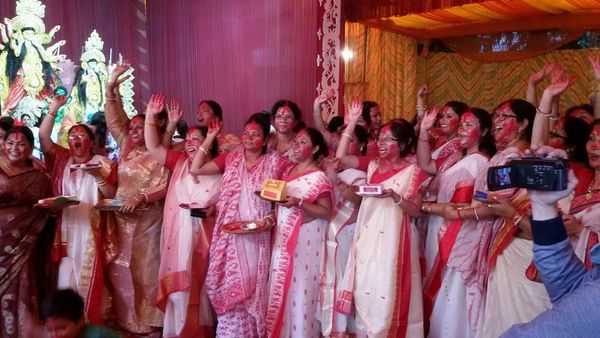
Durga Puja is a ten-day Hindu festival that celebrates the victory of Goddess Durga over the demon Mahishasura. It signifies the triumph of divine feminine power (Shakti) over negative forces. The last five days (Shashthi to Dashami) are the most significant and widely observed.
It is not only a religious event but also a grand cultural and social celebration, with music, dance, food, art, and elaborate pandals (temporary structures housing the goddess’s idols).
🕉️ The Origin Story – Mythological Background
📖 The Legend of Mahishasura
-
Mahishasura, a powerful demon, performed great penance and got a boon from Lord Brahma that no man or god could kill him.
-
With this power, Mahishasura attacked the heavens, defeated the gods, and drove them out of Swarga Loka (heaven).
-
The gods, helpless, went to Lord Brahma, Vishnu, and Shiva for help.
✨ Creation of Goddess Durga
-
The Tridev (Brahma, Vishnu, and Shiva) combined their powers to create a powerful female deity — Durga — who was born from their collective energies.
-
Each god gave her weapons and gifts:
-
Shiva gave his trident
-
Vishnu gave the Sudarshan Chakra
-
Indra gave his thunderbolt
-
Himalaya gave her a lion to ride
-
And so on…
-
⚔️ The Battle with Mahishasura
-
Durga, riding her lion, fought Mahishasura and his army for nine days and nights.
-
On the tenth day (Vijaya Dashami), she finally killed Mahishasura by piercing him with her trident as he was transforming between human and buffalo forms.
-
This marks Vijaya Dashami, the victory day, symbolizing the end of evil and the restoration of peace.
📜 How Durga Puja Started (Historical & Cultural Roots)
In Mythology:
-
The worship of Durga is believed to be described in Devi Mahatmya (Durga Saptashati), part of the Markandeya Purana, written around the 5th–6th century CE.
-
It describes the goddess’s battles and praises her as the Supreme Power (Adi Shakti).
In Bengal:
-
Durga Puja in Bengal dates back to at least the 16th century.
-
Landlords (zamindars) of Bengal organized Durga Puja as a grand festival.
-
The first community (sarbojanin) Durga Puja is said to have been started in Kolkata in the early 20th century, where people from all backgrounds contributed.
-
Today, thousands of pandals are set up across Bengal, each artistically themed and creatively showcasing the goddess and her entourage.
🔟 The 10 Days of Durga Puja
| Day | Name | Significance |
|---|---|---|
| Day 1 | Mahalaya | Invocation of the goddess; beginning of the Puja |
| Day 6 | Shashthi | Arrival of the goddess to her maternal home |
| Day 7 | Saptami | Beginning of the battle |
| Day 8 | Ashtami | Most auspicious day; Kumari Puja and Sandhi Puja |
| Day 9 | Navami | Last day of battle |
| Day 10 | Vijaya Dashami | Victory day; Durga slays Mahishasura; idols are immersed in rivers (Visarjan) |
🌟 Symbolism of Durga
-
Durga means the invincible.
-
She rides a lion — symbol of courage.
-
She has ten arms carrying weapons — signifying that she protects from all directions.
-
Her slaying of Mahishasura shows the triumph of righteousness over arrogance, ego, and evil.
🪔 Cultural Elements
-
Dhak beats (drums), Dhunuchi Naach (incense dance), and Sindoor Khela (vermillion smearing) are unique Bengali traditions.
-
People wear new clothes, visit pandals, and enjoy Bhog (sacred food).
-
It is also a time of artistic creativity, as each pandal competes in beauty, design, and theme.